2011 - 2012
30 copies
Signed and numbered
30 copies
Signed and numbered
41×29,5×2,7 cm
16.2×11.6×1 in.
16.2×11.6×1 in.



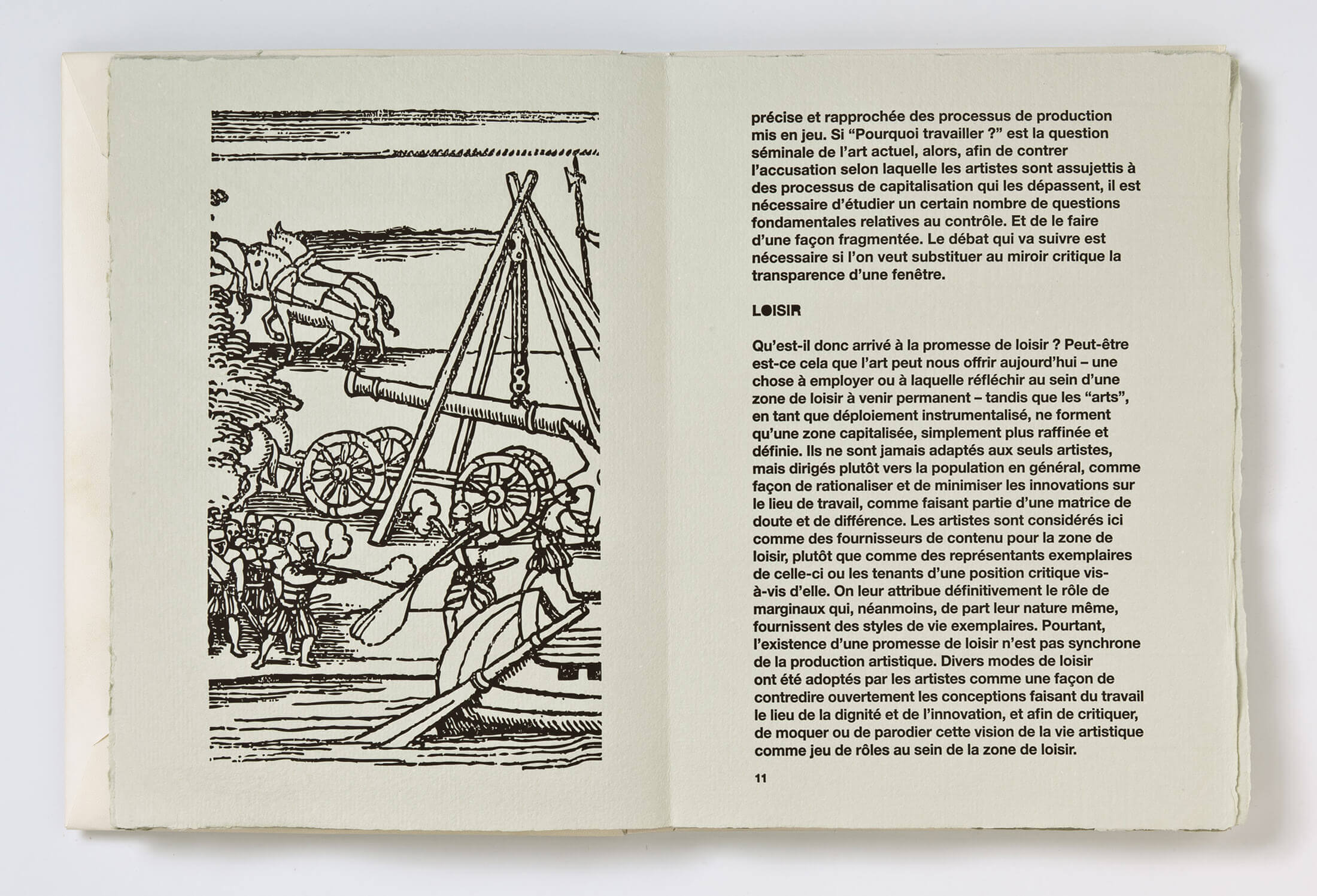



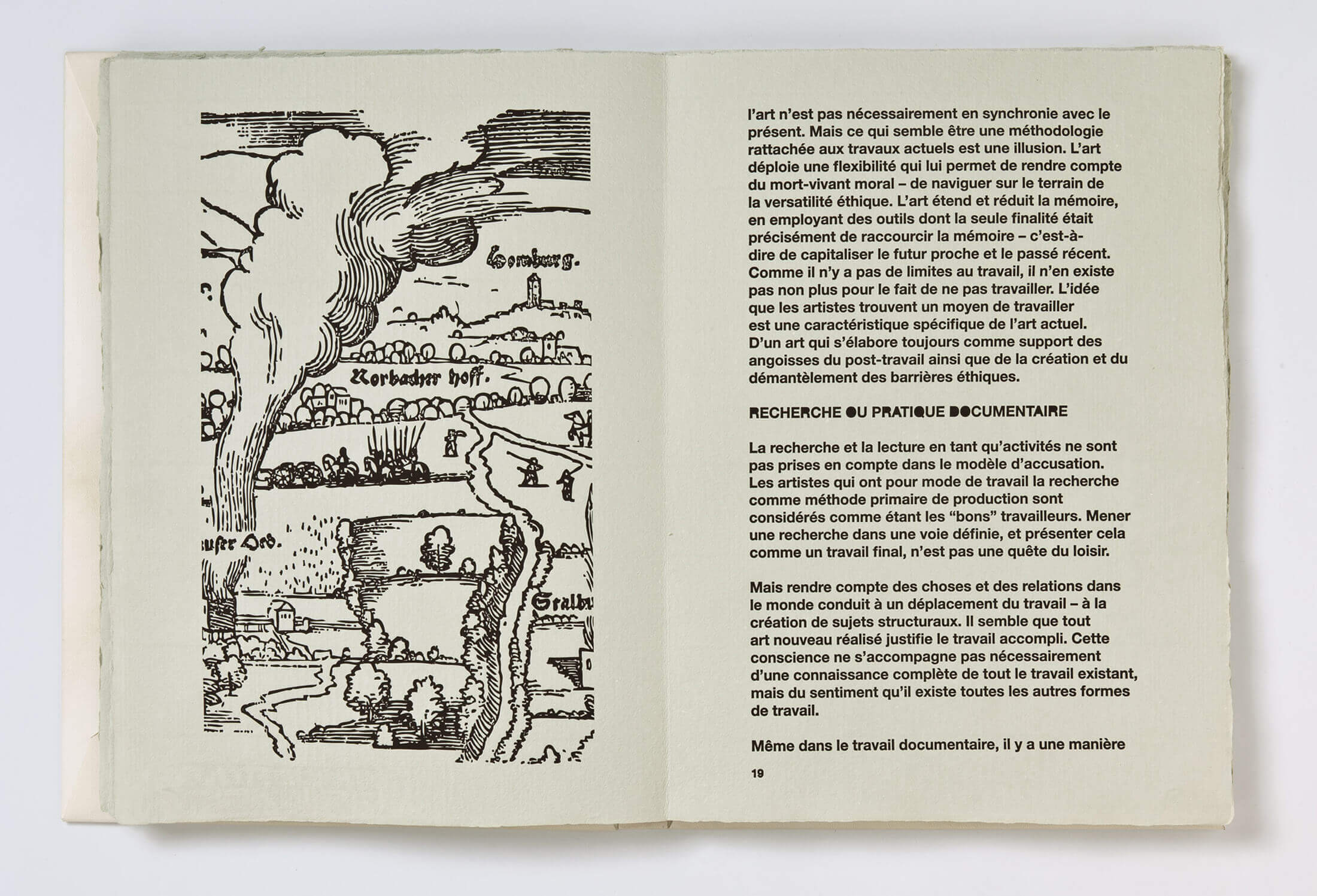
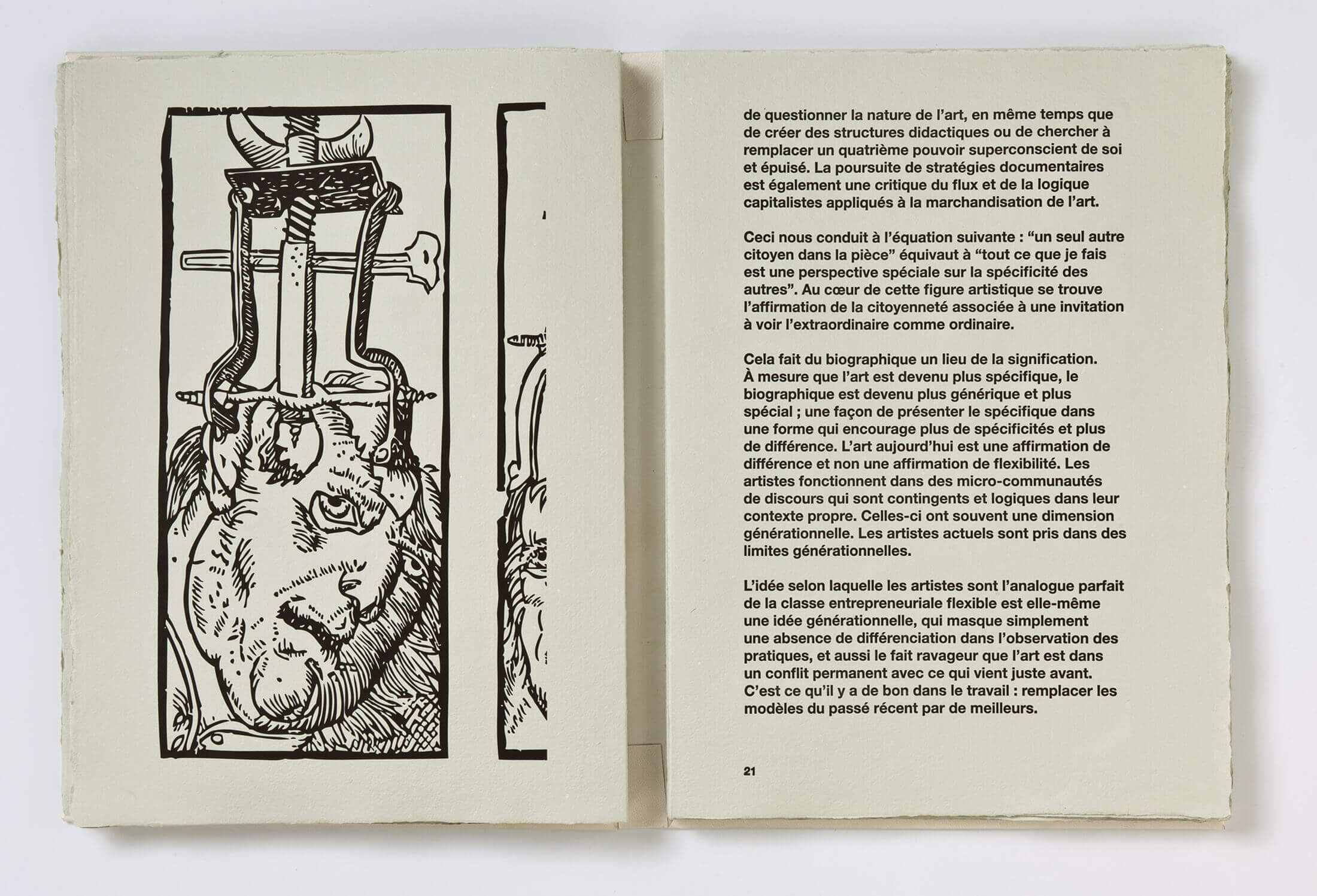



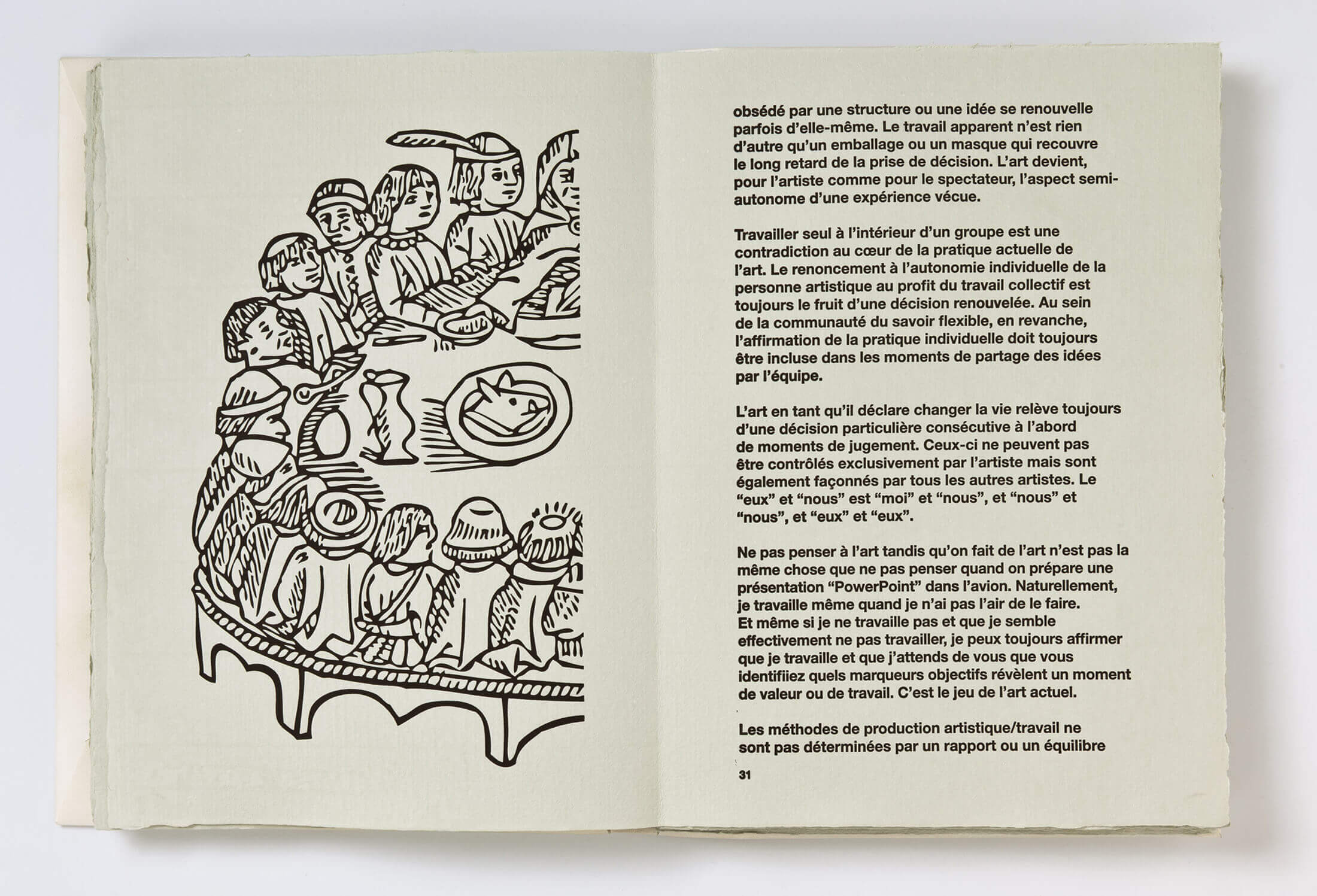








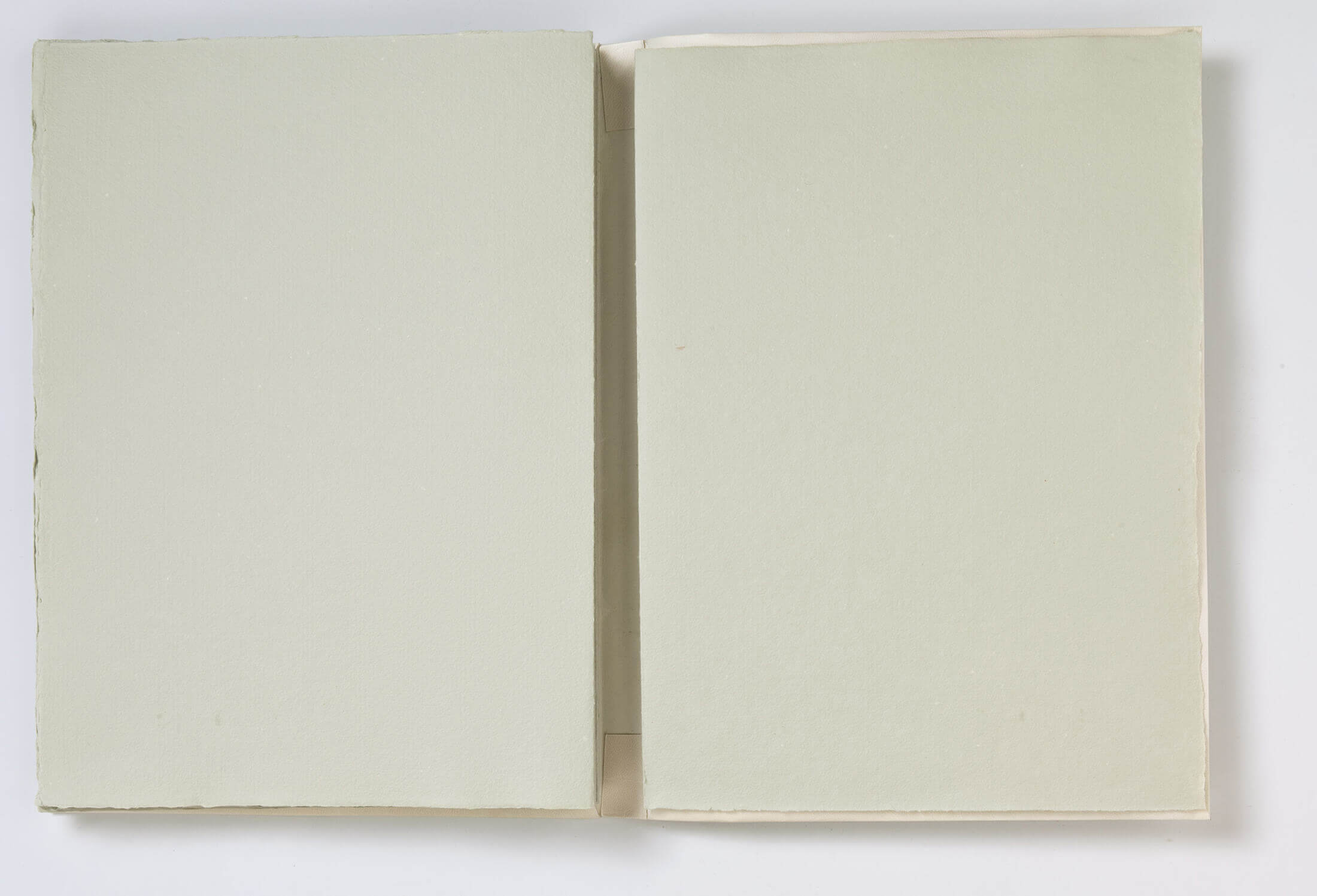




Liam Gillick, in collaboration with Three Star Books, presents a thought-provoking text titled “Pourquoi travailler?” (Why Work?). In this philosophical exploration, Gillick masterfully blends material elements with meticulously crafted prose to scrutinize the significance of various forms and degrees of labor in today’s culture industry. His insightful analysis navigates the complexities of production for knowledge workers, shedding light on the multifaceted nature of labor in contemporary cultural production.
Gillick adeptly incorporates secular imagery and even medieval iconography to bolster his argument. The result is a work that transcends its content, assuming a sacred quality due to both its form and the profound ideas it conveys. Initially presented as a symposium contribution, Gillick’s essay on labor has evolved into a small publication distributed as a giveaway. Additionally, it is freely accessible in English online, making its insights readily available to a wider audience.
Gillick adeptly incorporates secular imagery and even medieval iconography to bolster his argument. The result is a work that transcends its content, assuming a sacred quality due to both its form and the profound ideas it conveys. Initially presented as a symposium contribution, Gillick’s essay on labor has evolved into a small publication distributed as a giveaway. Additionally, it is freely accessible in English online, making its insights readily available to a wider audience.




In its Three Star Books manifestation, it is presented as a rarity. The text, typeset in the special Gillick Helvetica New that the artist himself designed, is printed in letterpress on the finest of Richard de Bas handmade paper. These sheets are gathered together in a bound cover created from white goatskin parchment, each cover pleated by hand.
The resultant volume, fitted with over a dozen black and white images executed after woodblock prints, is held together in a near-sculptural form, by a fluorescent orange Plexiglas case. Citing the earliest of printing traditions —woodcut— Gillick has selected images from the dawn of the mechanically produced book to go along with his both crafted and yet electronic book.
The resultant volume, fitted with over a dozen black and white images executed after woodblock prints, is held together in a near-sculptural form, by a fluorescent orange Plexiglas case. Citing the earliest of printing traditions —woodcut— Gillick has selected images from the dawn of the mechanically produced book to go along with his both crafted and yet electronic book.